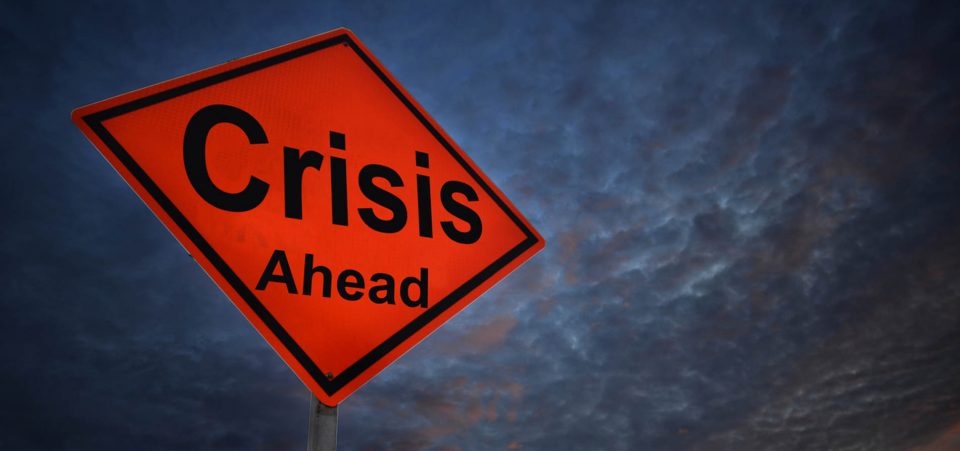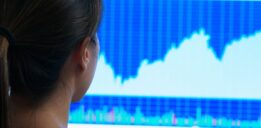The Post-Financial Crisis U.S. Economy Remains Exposed to Risk of Collapse
The North American stock markets, especially on Wall Street, have performed better than most others. But there are glaring problems that warrant caution, many staring investors in the face. The Dow Jones has hit a new record high after hinting it was moving towards a correction. Yet the bull market has weak foundations. It cannot hold up the current stock prices, and a financial crisis or even economic collapse seems inevitable.
Federal Reserve Chair Janet Yellen delivered a testimony to Congress that was the equivalent of walking on eggshells. She hinted that there would be no automatic rate hikes for the rest of the year. Keen analysts with few horses in the present stock market race were the only ones to interpret this move correctly. They see Yellen as realizing that raising rates too quickly could provoke economic collapse.
Also Read:
5 Signs of a U.S. Economic Collapse in 2017
“Economic Crash 2017” and How Next Financial Crisis Could Be Worse than 2008
The economy is not performing anywhere near as well to justify making borrowing more expensive. The banks can’t wait to raise interest rates, but that would make it much harder for businesses to grow, to hire more employees, and to take on productive—as opposed to financial—risks.
While wise, Yellen’s decision was an admission of weakness. The Fed chair determined—correctly, mind you—that the U.S. economy has not reached a strong enough point to survive higher interest rates. To raise rates at regular quarterly intervals would be to set the economy back into a coma.
Inflation Remains Flat
Americans don’t have to confront an annualized inflation rate of 176%; that’s Venezuela’s problem. However, a little inflation is a good thing. It’s one of the clearest signs that the economy is growing. So long as it stays within a reasonable and single-digit annual range, inflation points to economic health. On the other hand, no or little inflation shows economic weakness.
As it just so happens, inflation remains stunted. That means there’s little or no economic, as opposed to financial, growth. The American Bureau of Labor Statistics (BLS) said that consumer prices remained unchanged after falling 0.1% in May. It was supposed to have moved higher (not in line with forecasts at +0.1%). That would imply the U.S. economy is experiencing a contraction, let alone growth.
Gross domestic product shows that the economy has grown at an annual figure of 1.7%, in line with expectations. In other words, raising rates would have done a number on the financial markets. But investors are playing a self-fulfilling game; they sustain the bull market so long as the economy is stripped of all possible obstacles. The moment that the Fed so much as hints at raising rates, the markets drop.
One of the problems is that the tensions surrounding the so-called “Russiagate” scandal aren’t doing any favors for the president. Thus, Trump’s economic agenda remains bogged down in Congress over the tensions surrounding his alleged relations with the Russians. This is weakening the American currency and its purchasing power. That will hurt the already weak retail sector.
The weaker dollar will quickly result in higher consumer prices. This fuels an important but overlooked aspect of the economy. It can’t be measured, but it can be sensed. Americans will feel like their salaries (which will not grow as the price of goods do) will be weaker. They will feel as if the economy is weaker and consume less.
The Weak Dollar Has Not Produced Benefits
The causes for the weaker dollar have much to do with the President. Or, depending on your perspective, on the media’s obsession with Russiagate. The FBI, other American intelligence agencies, and the media are trying to paint the major pieces of the Trump administration in a bad light. This has fueled negative sentiment on the dollar. The American currency has been trading at almost a yearly minimum against other rivals such as the euro and the yen.
Since the beginning of 2017, the Greenback has lost well over six percent. This suggests that the markets are rather diffident about Trump’s ability to pursue his economic agenda and fulfill his promise of bringing back American jobs. But the pragmatism, which is reflected in the dollar, does not seem to translate to the stock market, which continues to run on the idyllic economic sentiment that prevailed in the first few weeks after Trump’s unexpected victory.
The weaker dollar was supposed to have generated advantages for the depressed economy. It should have encouraged American industrial production, significantly increased employment, and fueled domestic consumption. But the lower dollar has not done that. Exports have not increased, while public and household debts are at such peaks that neither the government nor most individual Americans can afford to spend.
The most optimistic thing that can be said about the dollar now is “patience.” That is, the impact of the changed financial conditions for the better will need a longer period of time to materialize. The current reality, however, does not look optimistic. U.S. companies have had no benefits whatsoever from the lower dollar, while the trade deficit has continued to grow. In other words, the economy remains hostage to the quagmire of the media and the Democratic Party’s refusal to accept reality and simply concede that Trump won the November election.
There is a contradiction between a stale economy and bullish markets, but few people see it. We have become so attuned to the performance of a handful of stocks and to the magic of new Dow Jones records that nobody, at the deep subconscious level, can tell the difference between a genuinely healthy economy and the financial markets. Often, the two are mutually exclusive.
The bull market as measured by the Dow Jones has been riding the bull uninterruptedly since the beginning of 2009. In 2009, the real economies of the United States, Europe, and Japan, not to mention others, were in the proverbial dumps. Millions were unemployed, housing prices went bust in many areas and there were few prospects of growth. The only thing that saved the economies from absolute social disaster were the low interest rates.
In other words, the performance of the stock markets have allowed governments to avoid having to take a deep look into what caused the financial crisis. It also prevented them from discovering the tools to manage the economies in this century full of so many technological and socioeconomic challenges. In short, nothing has really changed from September 2008 on the eve of the biggest financial crash since 1929.
Over the past nine years or so, the bull market has more than tripled in value. But has your salary increased 300%? What about your neighbor’s annual income? How much has it increased? The truth is that in both cases, you might be earning less now than in 2009.
Considerations of economic equality or balance aside, the most obvious analysis of the tremendous bull run on Wall Street is that the markets are in a kind of hyper state. However, they are also exceeding any logical limit. If there were such a thing as the stock market patrol, the S&P 500 would have received a major ticket.
All That the Next Crash Needs to Happen Is a Trigger
The consequences for anyone who has studied even a modicum of economic history or physics should be clear. The current market high is untenable. It rests on weak economic foundations. The next crash will be devastating in impact and capable of triggering a devastating downturn.
From a cyclical point of view, a market correction is due. But because many stocks are priced way beyond earnings (in other words, the market is too expensive), a sustained and imminent downturn could begin any time. All it needs is a trigger.
The trigger doesn’t need to have any financial or economic basis whatsoever. Indeed, given the present state of the world, the trigger could be any of the current U.S. political or geopolitical dramas going off course. Trump’s impeachment remains a threat. But it does not even have to come to that.
There are interests at play that want Trump to fail. That means, Trump is going to face obstacles in implementing his growth agenda. Once Wall Street realizes that there will be neither tax cuts or repatriation of funds benefits and infrastructure spending, the Fed will abandon any notion of interest rate hikes. That will signal the markets that the economy is weak and the bull market will crash.
In conclusion, we cannot know exactly when and where the spark to set panic on fire will occur. There are clearly multiple situations that could scare the markets. But we can be sure that it will happen soon and that it would be best to choose investments carefully, lest you should collect rotten fruits.






